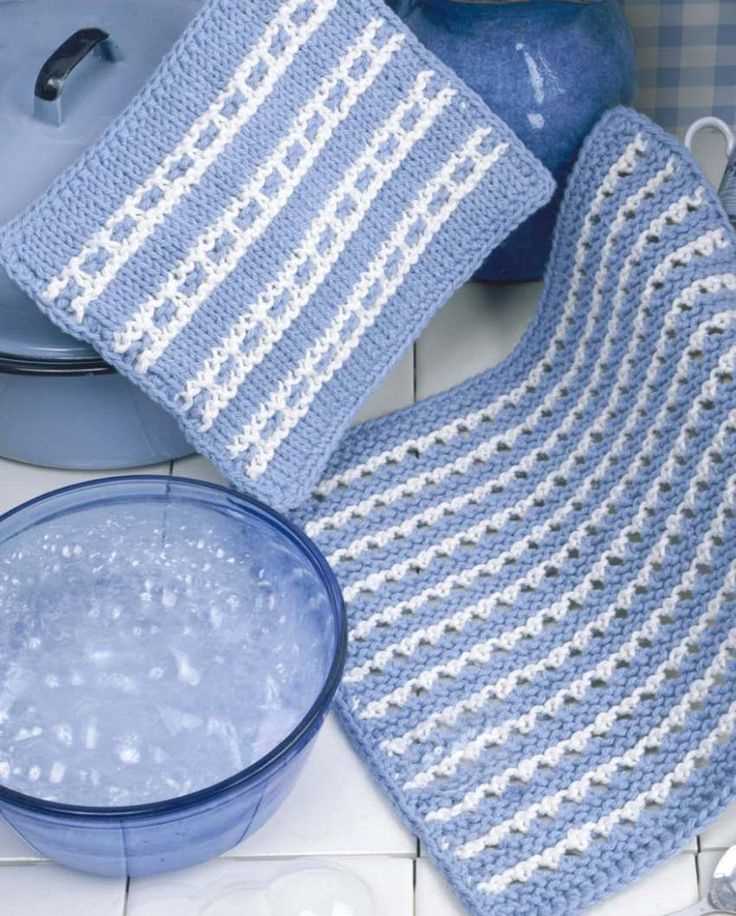
Looking for a quick and easy knitting project? Look no further! This dishcloth knitting pattern is perfect for beginners and seasoned knitters alike. Whether you’re new to knitting or just looking for a simple project to work on in your spare time, this dishcloth pattern is a great choice.
Not only is this pattern easy to follow, but it’s also a great way to practice your basic knitting stitches. The finished dishcloth is not only functional but also makes a great gift. Plus, knitting your own dishcloths is a more environmentally friendly alternative to using disposable ones.
This pattern uses basic knit and purl stitches, making it a great choice for knitters of all skill levels. It’s also a great way to use up any leftover yarn you may have lying around. With just a few simple materials and some basic knitting skills, you’ll have a beautiful dishcloth in no time.
So, if you’re looking for a fun and easy knitting project, give this dishcloth knitting pattern a try. It’s a great way to practice your knitting skills and create something useful at the same time. Plus, with the pattern being free, you can’t go wrong!
Easy Dishcloth Knitting Pattern Free
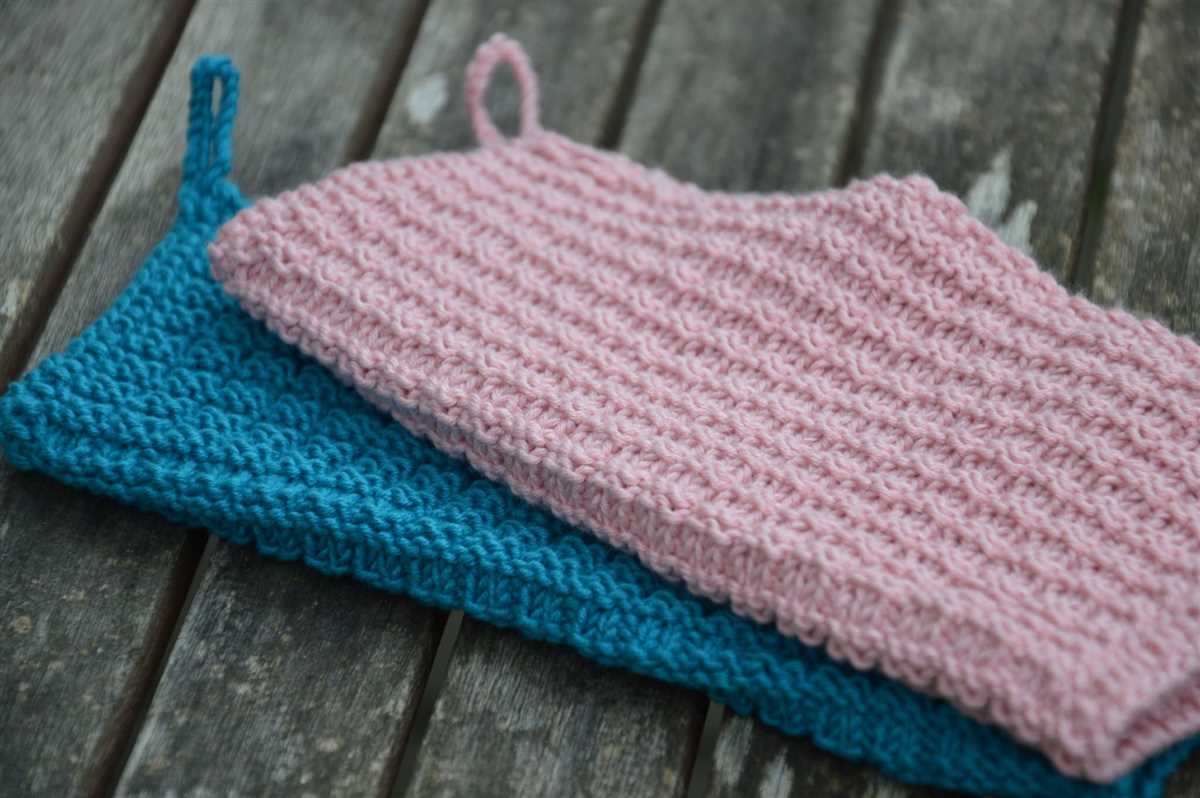
Looking for a quick and easy knitting project? Look no further than this dishcloth knitting pattern that’s both beginner-friendly and absolutely free! Whether you’re an experienced knitter or just starting out, this pattern is perfect for honing your skills and creating a useful and beautiful dishcloth.
Materials Needed:
- Size 8 knitting needles
- 1 skein of cotton yarn
- Tapestry needle
With just these few simple materials, you’ll be able to create a durable and absorbent dishcloth that’s perfect for scrubbing dishes, wiping down counters, and even as a small gift for friends and family.
Instructions:
- Cast on 30 stitches.
- Knit every row until your dishcloth measures approximately 8 inches in length.
- Bind off all stitches.
- Weave in any loose ends using a tapestry needle.
It’s as simple as that! This pattern is perfect for practicing basic knitting techniques, such as casting on, knitting, and binding off. You can also experiment with different stitch patterns or add a decorative border for a personalized touch.
This dishcloth knitting pattern is not only a great way to create useful items for your own home, but it’s also a fantastic project for using up leftover yarn from other knitting projects. And the best part? It’s completely free! So why not give it a try and start knitting your own dishcloths today?
What is a Dishcloth?
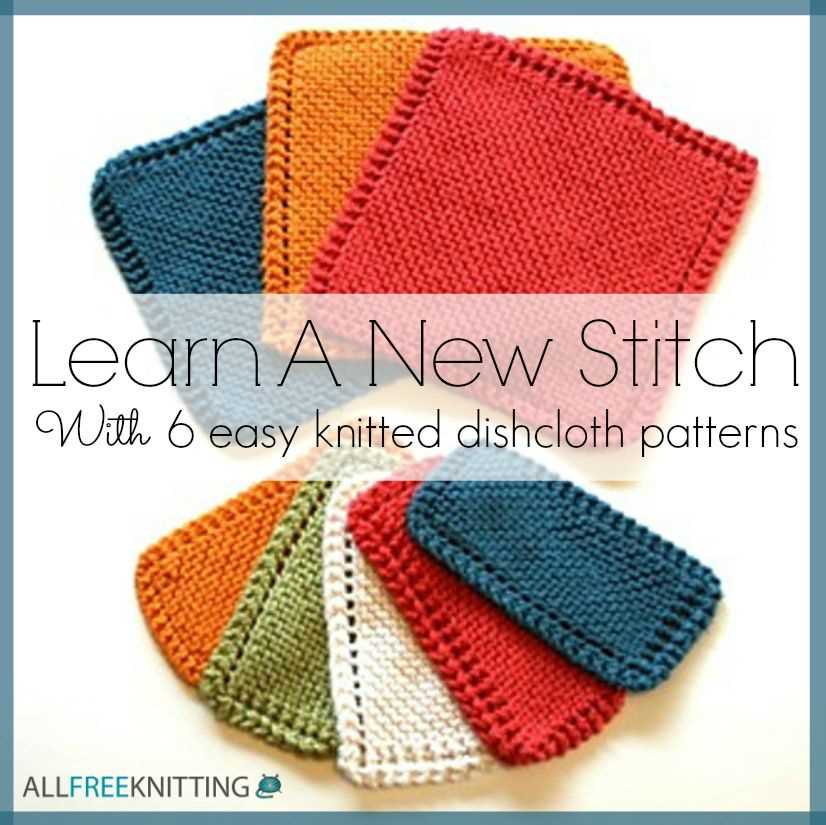
A dishcloth, also known as a dishrag, is a small piece of fabric that is used to clean dishes, countertops, and other surfaces in the kitchen. It is typically made from absorbent materials such as cotton or microfiber to help effectively remove dirt and grime.
Dishcloths come in various shapes and sizes, but the most common shape is a square or rectangle. They are often knitted or crocheted, making them a popular project for crafters. Dishcloths can also be purchased ready-made from stores.
Using a dishcloth has several advantages. First, it can easily be washed and reused, making it an eco-friendly alternative to disposable paper towels. Additionally, dishcloths are highly absorbent, allowing them to soak up spills and dry dishes quickly. They are also gentle on surfaces, making them suitable for use on delicate items such as glassware or silverware.
When using a dishcloth, it is important to regularly clean it to prevent the growth of bacteria. This can be done by either machine-washing it with laundry detergent or soaking it in a mixture of water and disinfectant. By maintaining a clean dishcloth, you can ensure that it remains hygienic and effective in the kitchen.
In conclusion, a dishcloth is a versatile tool used for cleaning dishes and other surfaces in the kitchen. Whether knitted, crocheted, or purchased, dishcloths offer an environmentally friendly and efficient way to keep your kitchen clean and tidy.
The Benefits of Knitting Your Own Dishcloths
Knitting your own dishcloths can be a fun and rewarding hobby with numerous benefits. Not only can you create unique and personalized dishcloths to suit your own style and needs, but there are also practical advantages to knitting your own dishcloths.
1. Quality and Durability: When you knit your own dishcloths, you have control over the materials and stitches used. This allows you to create dishcloths that are more durable and long-lasting compared to store-bought options. You can choose high-quality yarn that is designed to withstand repeated use and frequent washing, ensuring your dishcloths stay in great condition for a longer period of time.
2. Customization: By knitting your own dishcloths, you can customize them to suit your own preferences. You have the freedom to choose your favorite colors, stitch patterns, and sizes. This allows you to create dishcloths that match your kitchen decor or personal style, making them a unique and aesthetically pleasing addition to your home.
3. Eco-Friendly: Knitting your own dishcloths is a sustainable choice. By using yarn, a renewable resource, and reusing your dishcloths instead of using disposable options, you can reduce waste and contribute to a greener lifestyle. Additionally, you can use organic or eco-friendly yarn options to further minimize your environmental impact.
4. Cost-Effectiveness: While there may be some upfront cost for knitting supplies, knitting your own dishcloths can ultimately save you money in the long run. Store-bought dishcloths can be expensive, especially if you need to replace them frequently. By knitting your own, you can create multiple dishcloths for a fraction of the cost, ensuring you always have a clean cloth on hand without breaking the bank.
5. Relaxation and Stress Relief: Knitting is known for its therapeutic benefits. It can help reduce stress and anxiety, promote relaxation, and improve focus. By engaging in this soothing and repetitive activity, you can take a break from the demands of everyday life and enjoy a moment of tranquility while creating something practical.
In conclusion, knitting your own dishcloths not only allows you to unleash your creativity and personalize your home, but it also offers quality, customization, eco-friendliness, cost-effectiveness, and relaxation. So why not pick up your knitting needles and start creating your very own dishcloths today?
Choosing the Right Yarn for Your Dishcloth
When it comes to knitting dishcloths, choosing the right yarn is crucial. The yarn you select will determine the durability, absorbency, and overall quality of the finished product. Here are some factors to consider when choosing yarn for your dishcloth project.
Fiber Content
The first thing to consider is the fiber content of the yarn. For a dishcloth, you’ll want to use a yarn that is absorbent and easy to clean. Cotton is an excellent choice for dishcloths as it is absorbent and has natural antibacterial properties. Look for 100% cotton yarns, as they will give you the best results. Avoid any yarns that contain synthetic fibers, as they may not be as absorbent and could melt if exposed to high heat.
Weight
Another important factor is the weight of the yarn. Dishcloths are often knit using a worsted weight yarn, which is a medium weight yarn. This weight provides a good balance between thickness and durability. It is thick enough to handle scrubbing and cleaning, but not so thick that it becomes cumbersome. Consider the pattern you are using and choose a yarn that is suitable for that particular design.
Color
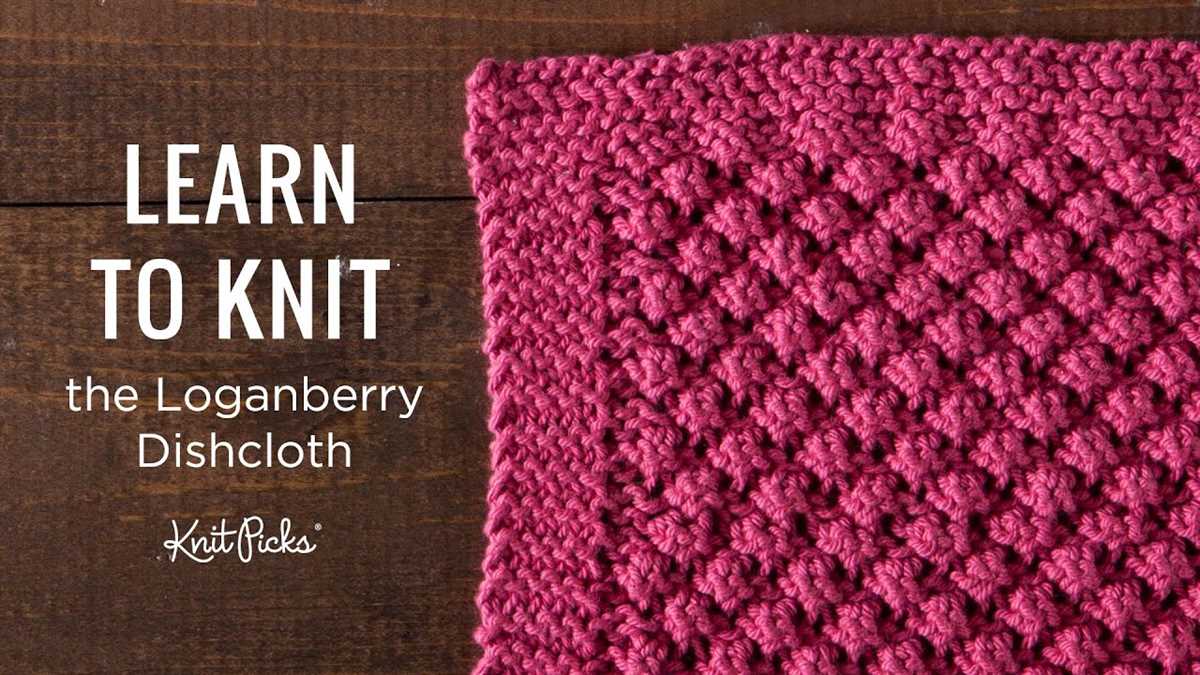
While the color of the yarn may not affect the functionality of the dishcloth, it can certainly enhance its aesthetic appeal. Choose a color that complements your kitchen decor or reflects your personal style. Keep in mind that lighter colors may show stains more easily, so if you are concerned about maintaining the appearance of your dishcloth, opt for darker shades.
Conclusion
When knitting a dishcloth, choosing the right yarn is essential. Look for 100% cotton yarns that are absorbent and easy to clean. Consider the weight of the yarn, opting for a worsted weight for a good balance between thickness and durability. Lastly, choose a color that suits your taste and complements your kitchen. By paying attention to these factors, you can ensure that your dishcloth will be both functional and visually appealing.
Selecting the Appropriate Knitting Needles
When it comes to knitting, choosing the right needles is essential for the success of your project. The type and size of needles can greatly affect the outcome of your knitting. Whether you are a beginner or an experienced knitter, selecting the appropriate needles is important for achieving the desired result.
When selecting knitting needles, one of the first considerations is the material. Needles can be made from various materials such as metal, bamboo, wood, or plastic. Metal needles are durable and have a smooth surface, making them ideal for working with slippery yarns. Bamboo and wooden needles have a warmer touch and are great for those who prefer a more natural feel. Plastic needles are lightweight and affordable, making them a popular choice for beginners.
The size of the needles is another important factor to consider. The size of the needles will determine the gauge or tension of your knitting. The recommended needle size can usually be found on the yarn label or in the knitting pattern. It’s important to use the correct size of needles to ensure that your stitches are not too tight or too loose. Using larger needles will result in a looser fabric, while smaller needles will create a tighter fabric.
In addition to the material and size, it’s also worth considering the type of needle tip. There are two main types: straight needles and circular needles. Straight needles are the traditional type and are often used for flat projects such as scarves or blankets. Circular needles, on the other hand, have a flexible cable connecting two needle tips, making them ideal for knitting in the round or for larger projects. The choice between straight needles and circular needles depends on your personal preference and the type of project you are working on.
In conclusion, selecting the appropriate knitting needles is essential for creating successful and enjoyable knitting projects. Consider the material, size, and type of needle tip that suits your preferences and the requirements of your project. By choosing the right needles, you can ensure that your stitches are even, your tension is correct, and your finished project turns out just as you envisioned.
Getting Started with the Knitting Pattern
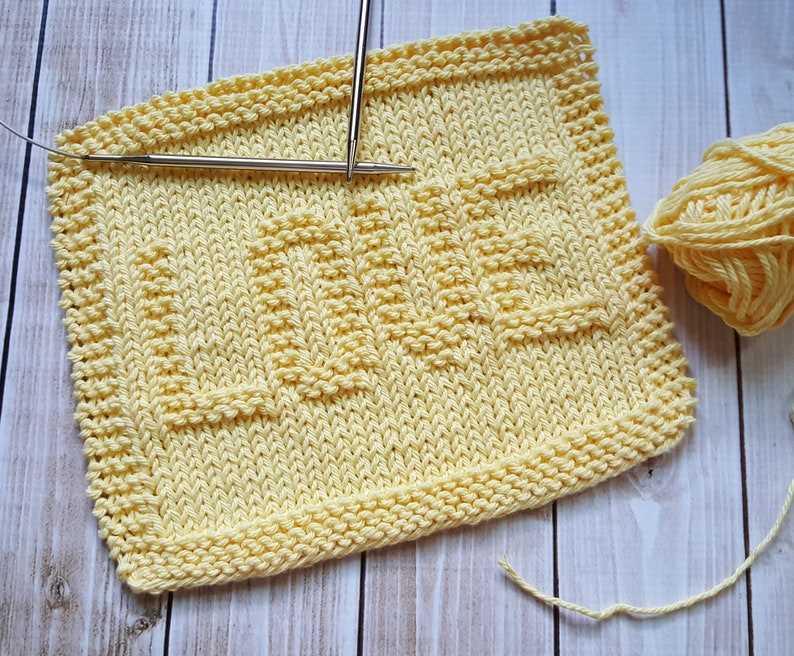
Before you start knitting your dishcloth, make sure you have all the necessary materials. You will need a pair of knitting needles, preferably size 8 or 9, and a ball of cotton yarn. The cotton yarn is best suited for dishcloths as it is absorbent and durable.
Once you have your materials ready, you can begin casting on. To cast on, make a slip knot and place it on one of the knitting needles. Then, insert the other knitting needle into the slip knot and pull the yarn through to create a new stitch. Repeat this process until you have the desired number of stitches, typically around 40-50 stitches for a dishcloth.
After casting on, you can start knitting the dishcloth following the pattern. The pattern will usually specify the number of rows and stitches required for each section of the dishcloth. It may also include instructions for different types of stitches, such as knit and purl stitches, to create various textures or patterns.
As you work through the pattern, make sure to keep track of your progress by counting the number of rows and stitches completed. This will help ensure that your dishcloth turns out the correct size and shape.
Once you have completed the pattern, finish off your dishcloth by binding off. To bind off, knit the first two stitches, then insert the left needle through the first stitch on the right needle, pass it over the second stitch, and let it drop off the needle. Continue this process until you have one stitch remaining, then cut the yarn and pull it through the last stitch to secure.
Finally, weave in any loose ends and give your dishcloth a gentle block by dampening it and laying it flat to dry. This will help relax the stitches and give the dishcloth a neat and polished appearance.
With these basic instructions, you can easily get started with your knitting pattern and create beautiful and functional dishcloths for your kitchen. Happy knitting!
Step-by-Step Instructions for Knitting the Dishcloth
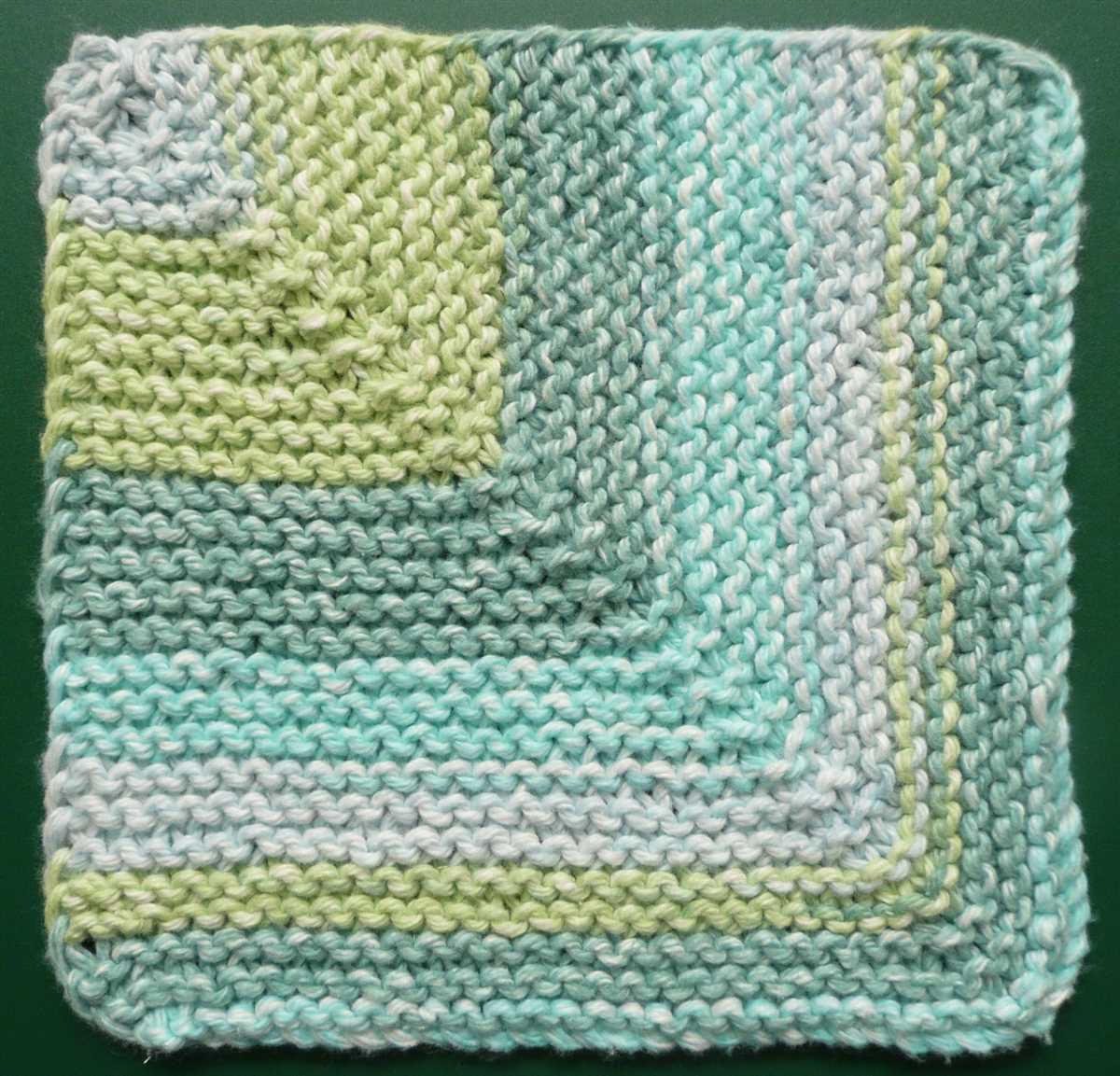
Knitting a dishcloth is a simple and rewarding project for beginners and experienced knitters alike. Not only does it provide a practical item for your kitchen, but it also allows you to practice different techniques and stitches. Follow these step-by-step instructions to create your own dishcloth.
Materials:
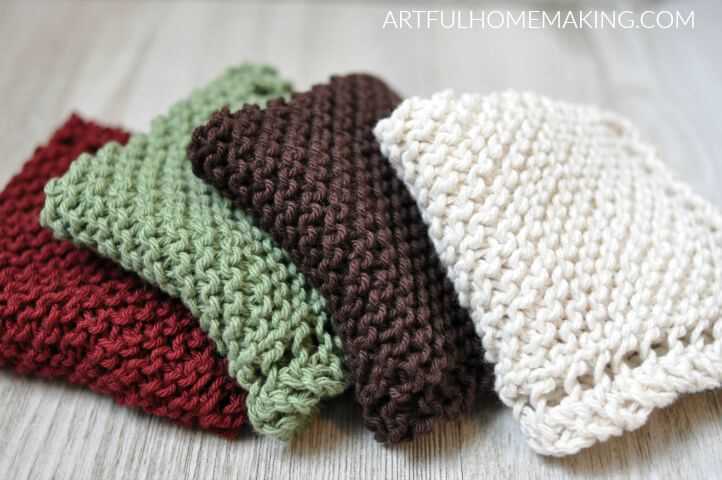
- Yarn: Choose a cotton yarn for absorbency and durability.
- Knitting needles: Use the recommended size for your chosen yarn.
- Tapestry needle: For weaving in loose ends.
- Scissors: To cut the yarn.
Instructions:
- Start by casting on the desired number of stitches. A common size for a dishcloth is around 40 stitches, but you can adjust it based on your preference.
- Next, begin knitting in the pattern of your choice. You can use the basic garter stitch (knitting every row) for a simple design, or experiment with different stitches like seed stitch or ribbing.
- Continue knitting until your dishcloth reaches the desired length. This can range from 8 to 12 inches, depending on your preference.
- To bind off, knit the first two stitches as usual. Then, using your left needle, lift the first stitch over the second stitch and off the right needle. Knit the next stitch and repeat the process until only one stitch remains. Cut the yarn, leaving a tail, and pull it through the final stitch to secure.
- Finally, weave in any loose ends using a tapestry needle to ensure your dishcloth looks neat and tidy.
Once you’ve finished knitting your dishcloth, give it a gentle wash to soften the yarn and enhance its absorbency. After drying, your dishcloth is ready to use or can be gifted to a friend or family member. Enjoy the satisfaction of creating a useful and beautiful textile item with your knitting skills!
Tips and Tricks for Perfecting Your Dishcloth
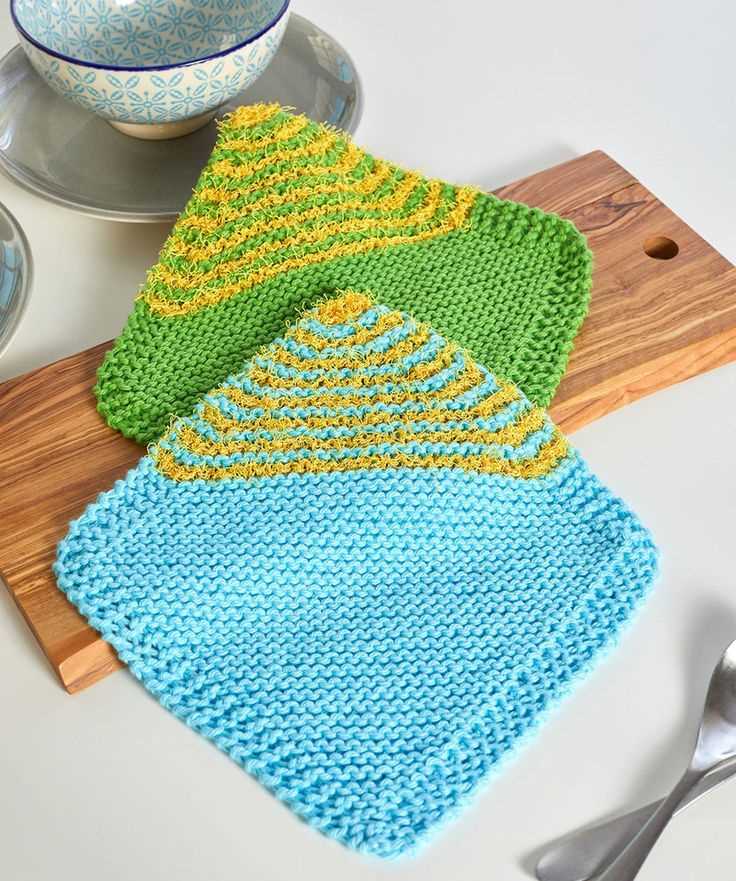
Knitting dishcloths is not only a practical way to create useful items for your kitchen, but it can also be a fun and relaxing hobby. However, achieving perfect dishcloths can sometimes be a challenge. Here are some tips and tricks to help you perfect your dishcloth knitting skills.
Choose the Right Yarn and Needles
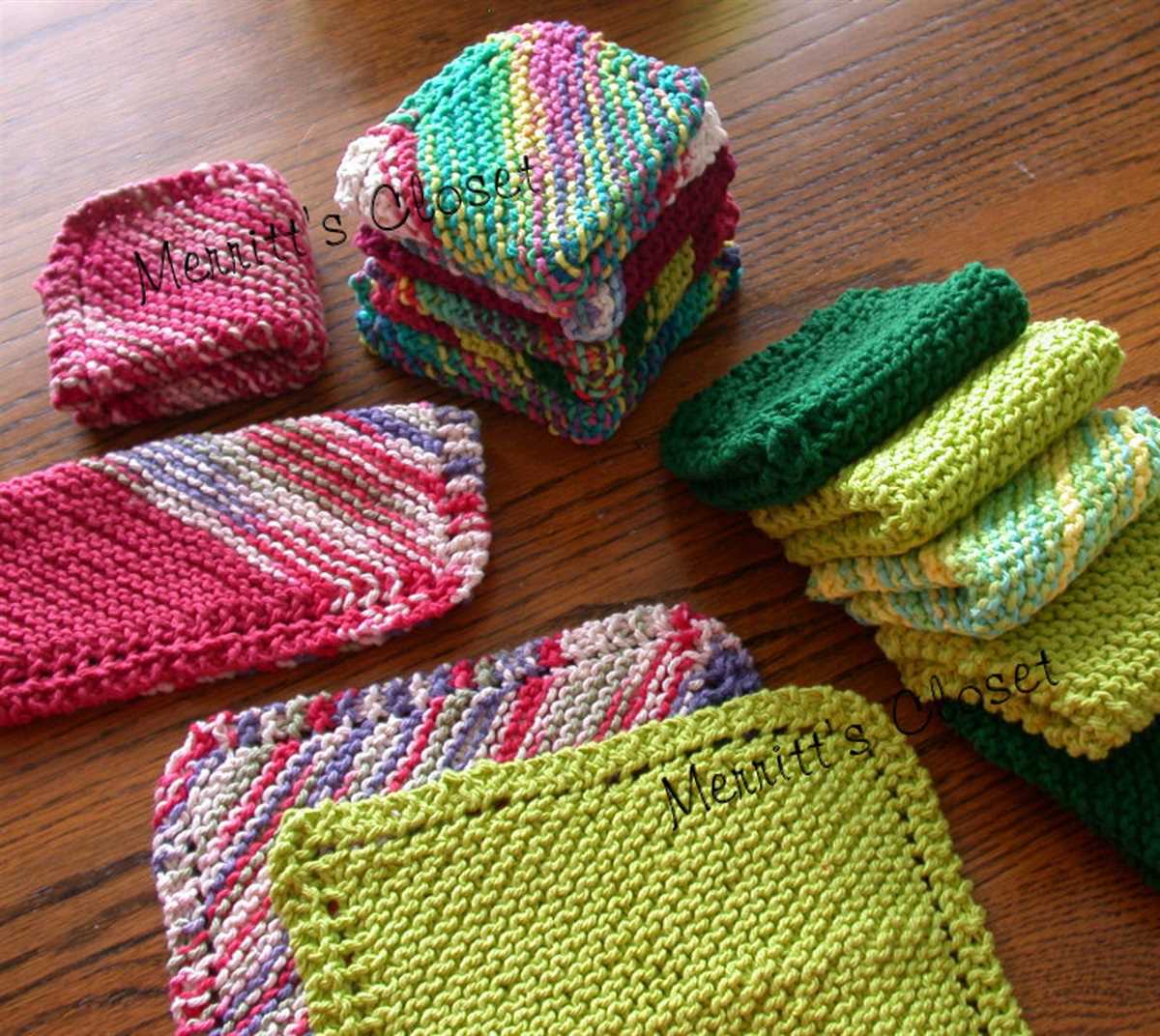
When knitting dishcloths, it’s important to choose the right yarn and needles. Opt for a cotton yarn that is absorbent and durable, as dishcloths will be exposed to water and frequent use. Consider using a lighter weight yarn for a softer and more delicate texture. Additionally, using needles that are appropriate for your chosen yarn weight will help you achieve the desired tension and stitch definition.
Pick the Perfect Pattern
There are countless dishcloth patterns available for free online, so take the time to find one that suits your preferences and skill level. Look for patterns that are clearly written and include helpful stitch explanations. Consider starting with a simple pattern if you’re a beginner and gradually progress to more complex designs as you gain confidence.
Practice Proper Tension
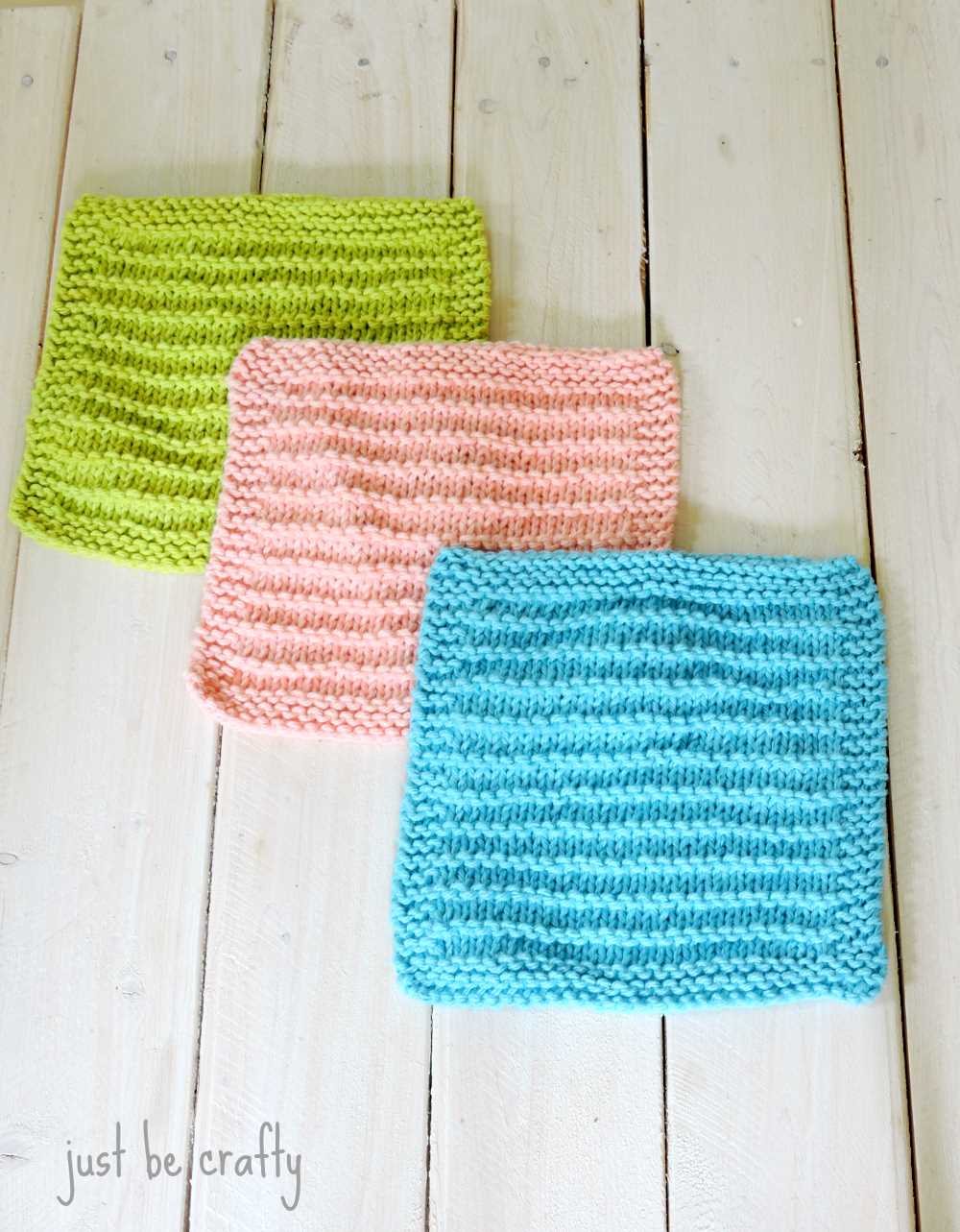
Tension is key in achieving consistent and uniform stitches. Be mindful of your tension throughout the knitting process by paying attention to how tight or loose you’re holding the yarn. Experiment with different tension techniques and find what works best for you. Practice makes perfect, so don’t be discouraged if it takes some time to find your ideal tension.
Block Your Finished Dishcloth
Blocking your finished dishcloth can make a significant difference in the overall appearance and shape of the final product. Blocking helps to even out stitches, straighten edges, and give the dishcloth a more polished look. Follow the instructions provided on your yarn label or seek out general blocking techniques specific to cotton yarn.
Keep a Tidy Knitting Space
A tidy knitting space can greatly enhance your knitting experience and help you achieve better results. Clear away any distractions and keep your tools, yarn, and pattern organized. Having a clean and clutter-free area will allow you to focus on your knitting and avoid making mistakes.
By following these tips and tricks, you’ll be on your way to creating perfect dishcloths that are not only functional but also beautiful. Enjoy the process of knitting and don’t be afraid to experiment with different patterns and techniques to find what works best for you.
Adding Personalization to Your Dishcloth
Knitting dishcloths is a fun and practical way to add a personal touch to your kitchen. With a few simple techniques, you can easily customize your dishcloth to match your style and preferences. Here are some ideas to help you add a personalized touch to your dishcloth knitting project:
1. Choose a personalized pattern: Start by selecting a dishcloth knitting pattern that reflects your individual taste and style. Look for patterns that incorporate your favorite colors, textures, or motifs. You can find a wide variety of free dishcloth patterns online or design your own pattern to make it truly unique.
2. Add monogram or initials: Personalize your dishcloths by adding your monogram or initials. You can knit or embroider your initials onto the cloth using a contrasting yarn color. This adds a touch of elegance and makes the dishcloth feel more personal.
3. Experiment with color: Don’t be afraid to play with different color combinations to create a visually appealing dishcloth. Consider using colors that match your kitchen decor or blend well with your existing dishware. Adding a pop of color can make your dishcloth stand out and add a vibrant touch to your kitchen.
4. Try different stitch patterns: Explore various stitch patterns to give your dishcloth an interesting texture. You can try lace patterns for a delicate and feminine look, or opt for a more structured stitch pattern for a modern and sleek design. Experimenting with different stitch patterns allows you to create a dishcloth that suits your personal style.
5. Embellish with buttons or beads: Add a touch of embellishment to your dishcloth by sewing on buttons or beads. You can create a simple buttonhole or bead placement in your dishcloth pattern, and then sew on the buttons or beads after the knitting is complete. This adds a unique and decorative element to your dishcloth.
6. Create a matching set: Consider knitting a set of dishcloths that coordinate with each other. You can use the same pattern and color palette with slight variations in the design to create a cohesive set. This not only adds a personalized touch to your kitchen but also makes a thoughtful gift for friends and family.
With these simple ideas, you can easily personalize your dishcloth knitting project and create a unique and functional addition to your kitchen. Whether you choose to add your initials, experiment with color, or embellish with buttons, your dishcloth will be a reflection of your personal style and creativity.
Caring for and Cleaning Your Knitted Dishcloth
Knitted dishcloths are a versatile and practical addition to any kitchen. They are not only absorbent and durable, but also provide a touch of handmade charm. To ensure that your dishcloth lasts a long time and retains its functionality, it’s important to properly care for and clean it.
Handwashing: It is recommended to hand wash your knitted dishcloth to preserve its shape and prevent any damage. Fill a sink or basin with warm water and add a mild detergent. Gently agitate the dishcloth in the soapy water, making sure to pay attention to any stained areas. Rinse the dishcloth thoroughly with cool water, making sure to remove all traces of detergent. Squeeze out any excess water, and lay the dishcloth flat to air dry.
Machine washing: If you prefer to machine wash your dishcloth, it is important to use a gentle cycle and cold water. Place the dishcloth in a mesh laundry bag to protect it from any snags or stretching. Use a mild detergent and avoid using any fabric softeners or bleach. After the washing cycle is complete, remove the dishcloth from the laundry bag and lay it flat to air dry.
Stain removal: If your knitted dishcloth has stubborn stains, it is best to treat the stains as soon as possible. Gently blot the stained area with a clean cloth or sponge to remove any excess liquid. Apply a small amount of liquid dish soap directly onto the stain and gently massage it in using your fingers. Rinse the dishcloth thoroughly with cool water. If the stain persists, repeat the process or use a stain remover specifically designed for fabric.
Storage: To keep your knitted dishcloth in good condition, it’s important to store it properly. Make sure the dishcloth is completely dry before storing it to prevent any mold or mildew growth. Fold the dishcloth neatly and place it in a drawer or hang it up using a hook or clothespin. Avoid placing heavy objects on top of your dishcloth to prevent any unnecessary stretching or damage.
By following these simple care and cleaning instructions, you can ensure that your knitted dishcloth remains soft, absorbent, and ready to tackle any kitchen task!
Exploring More Patterns and Designs for Dishcloths
In addition to the easy dishcloth knitting pattern provided earlier, there are countless other patterns and designs to explore. If you’re looking for more variety and challenge in your dishcloth knitting projects, here are some ideas to consider:
1. Lace Dishcloths
Lace patterns can add an elegant touch to your dishcloth creations. Look for knitting patterns that incorporate lace stitches, such as yarn overs and decreases, to create intricate and delicate designs. These dishcloths can be both functional and decorative, making them a stylish addition to any kitchen.
2. Colorwork Dishcloths
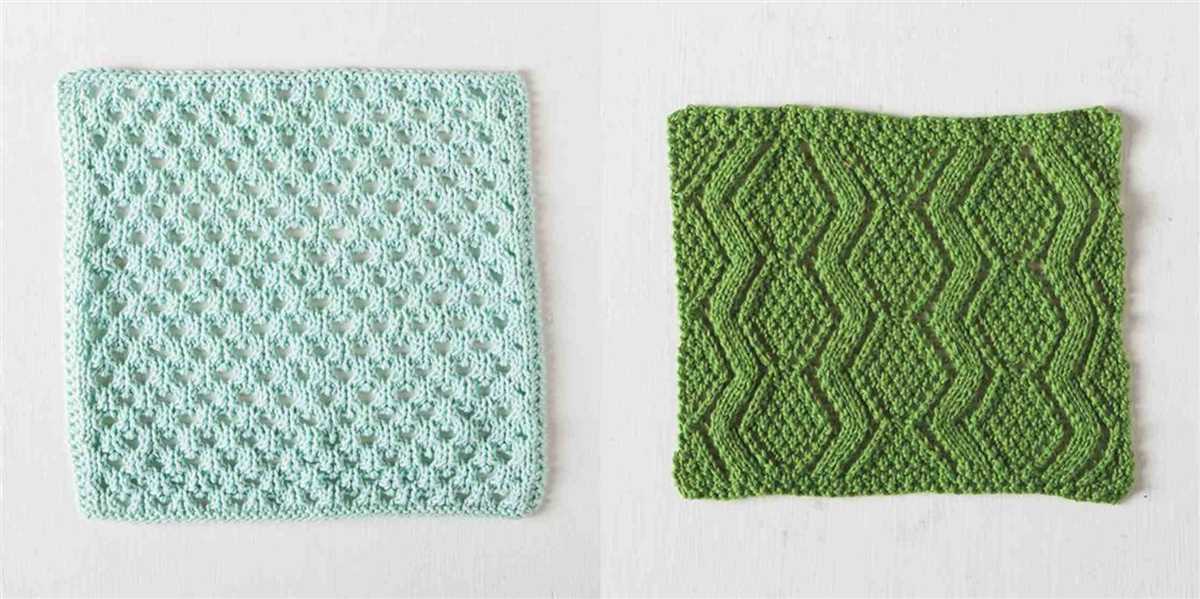
Colorwork is a great way to add visual interest to your dishcloths. Explore patterns that incorporate different colors and techniques like stranded knitting or intarsia. You can create geometric patterns, stripes, or even fun pictorial designs like fruits, animals, or flowers. Colorwork dishcloths can be a fun challenge and a great opportunity to experiment with different color combinations.
3. Textured Dishcloths
If you prefer a more tactile experience, consider knitting dishcloths with textured stitches. Cable and seed stitch patterns are popular choices that create a raised surface and a unique texture. These dishcloths not only look interesting but also provide excellent scrubbing power for those tough cleaning tasks.
4. Novelty Dishcloths
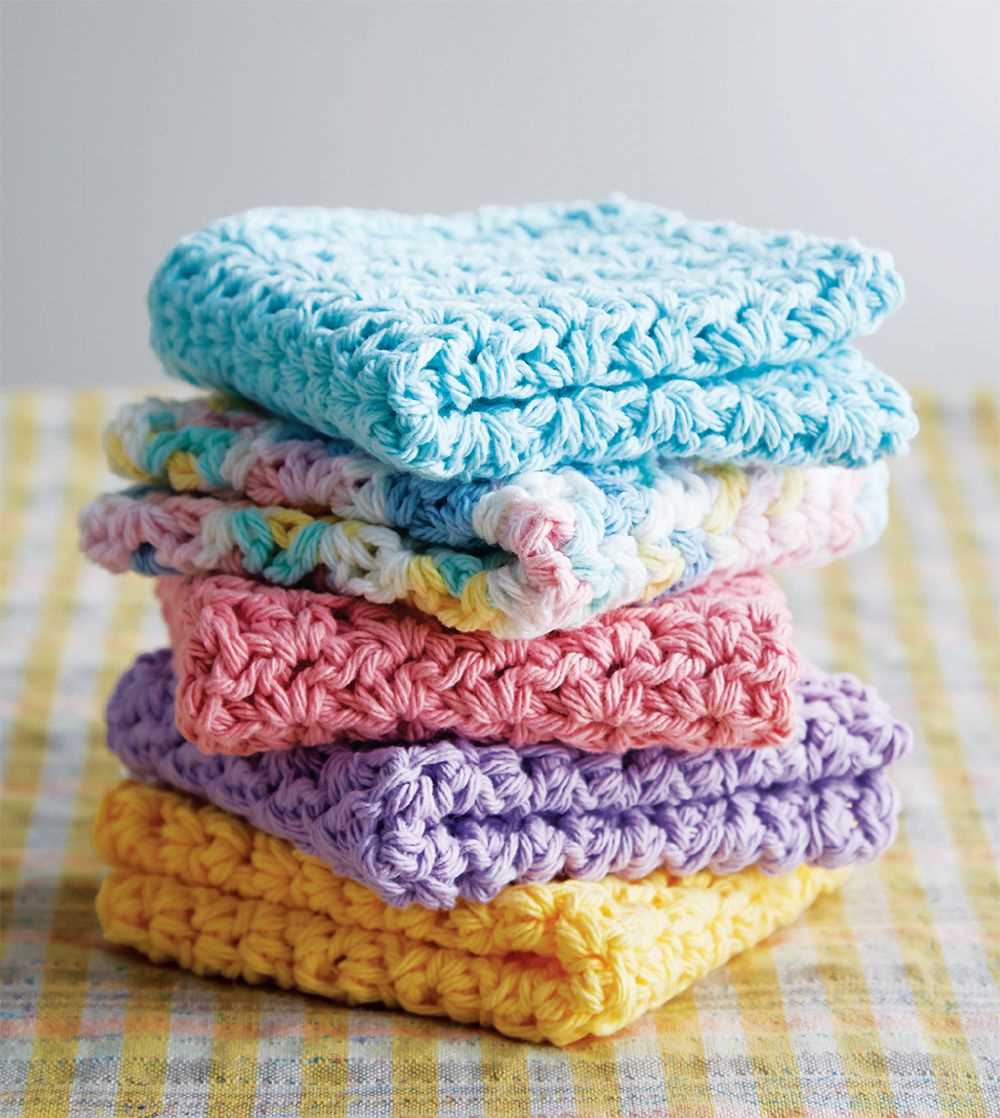
For a touch of creative fun, try knitting dishcloths in novelty shapes or designs. You can find patterns to create dishcloths in the shape of animals, fruits, or even holiday-themed designs. These dishcloths are not only functional but also make great gifts or conversation starters in your kitchen.
With these ideas in mind, you can now explore a vast array of patterns and designs to create unique and personalized dishcloths. Whether you’re a beginner or an experienced knitter, there’s a pattern out there to suit your skill level and style. Happy knitting!